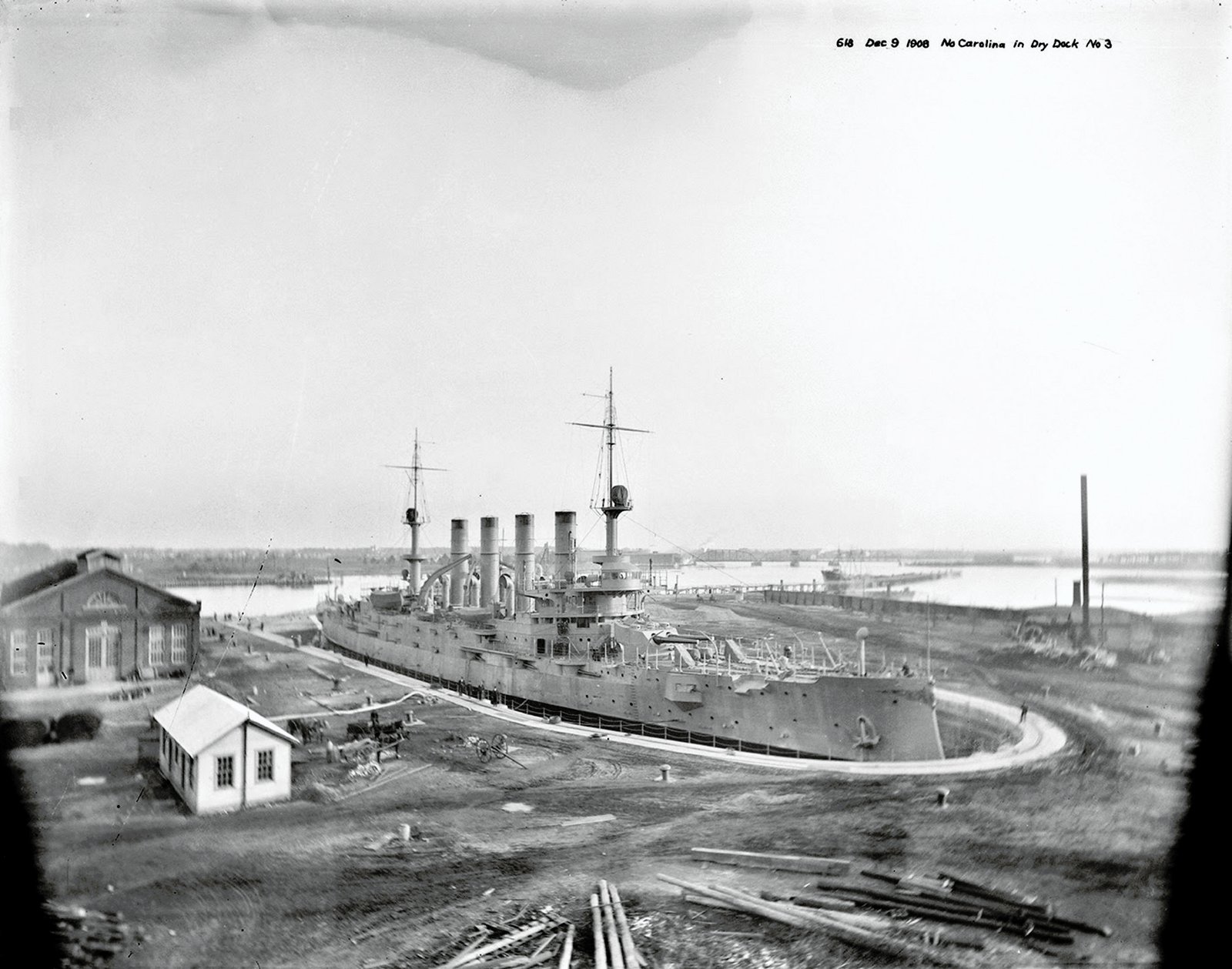Just over 117 years ago, on February 28, 1907 you would have witnessed this rare birds-eye view from the smokestack of former Building 93, the garbage crematorium, that shows the almost completed Dry Dock 3 as originally configured at a total length of 550 feet.
There are a lot of hidden facility details in plain view, let’s explore some of them:
Notice the earthen plug outboard of the stone caisson seat that is not removed although they have already placed the keel blocks that USS North Carolina (Armored Cruiser No. 12) would rest on beginning December 8, 1908 at the first docking, over a year in advance.
Only the inboard crane rail has been set within the outer wall system of the dock. There is a vast empty opening out to the bollards and the remaining portion of the 18′ wide gauge crane rail would not be set until the years following 1911 when this dock is lengthened to a total of 724 feet. This is proof that the dock was built in planned growth stages. At first, it was used only as a true dry dock without portal crane support.

The 1830 brick boundary wall that begins at Building 19 and Quarters “A” was never intended as a defensive object but only to define the newly procured Gosport Shipyard property to the south in order to construct the stone dock (Dry Dock #1). That dock area is shown in the distance between the great steam crane and the former Building 21 pump house, which has a large stack on its roof as viewed on the left of the image.
Also, in regard to the brick boundary wall, from the spring of 1861 until the spring of 1862, the Gosport Shipyard was held by Confederate forces who cut rifle holes in the brick wall to defend for a fight that never came. You can plainly witness the holes bricked-in by Union forces after the summer of 1862 not only in this view but also in today’s north end of our modern yard.
Dry Dock 2 was first completed in 1889 as a wooden dock; note the sloping walls that appear as steps in the center of the image.
The large brick structure between Dry Dock 2 and Dry Dock 3 is the former Building 56 Sheetmetal Shop, which was demolished to make way for our current repair shop that supports both docks.
The brick wall has also been opened with a crossing by a railroad track leading into the recently obtained 273 acres of the Schmolle tract of land as the former Norfolk Navy Yard was poised for tremendous growth.
As I share in my history lectures to all of the new Norfolk Naval Shipyard employees, I tell them that they “walk over the very grounds where so many great naval innovations occurred” and this simple image lays testament to that statement for what occurred in future.

